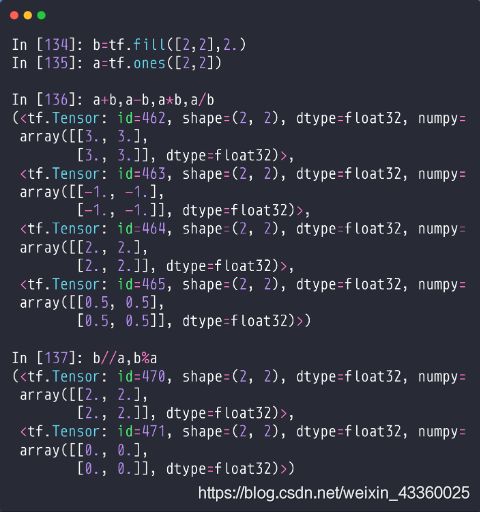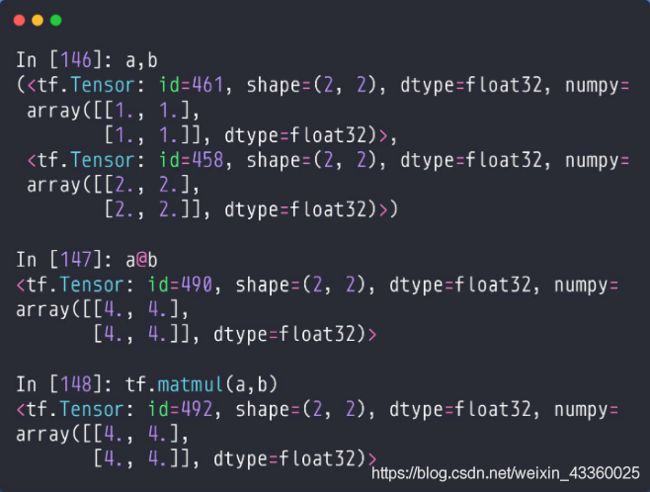- 【动手学深度学习】4.10 实战Kaggle比赛:预测房价
XiaoJ1234567
《动手学深度学习》深度学习人工智能
目录4.10实战Kaggle比赛:预测房价1)数据预处理2)模型定义与训练3)模型评估与预测4)模型训练与预测提交5)示例超参数(可调)4.10实战Kaggle比赛:预测房价数据来源:Kaggle房价预测比赛.1)数据预处理读取数据importpandasaspdtrain_data=pd.read_csv('../data/kaggle_house_pred_train.csv')test_da
- PyTorch 在 Python 自然语言处理中的运用
Python编程之道
Python编程之道pythonpytorch自然语言处理ai
PyTorch在Python自然语言处理中的运用关键词:PyTorch,Python,自然语言处理,深度学习,文本分类,情感分析摘要:本文全面探讨了PyTorch在Python自然语言处理(NLP)领域的运用。首先介绍了相关背景知识,包括目的范围、预期读者等内容。接着详细阐述了核心概念,如词嵌入、循环神经网络等,并给出了相应的原理示意图和流程图。深入讲解了核心算法原理,结合Python代码进行详细
- 量化价值投资中的深度学习技术:TensorFlow实战
量化价值投资中的深度学习技术:TensorFlow实战关键词:量化价值投资,深度学习,TensorFlow,股票预测,因子模型,LSTM神经网络,量化策略摘要:本文将带你走进"量化价值投资"与"深度学习"的交叉地带,用小学生都能听懂的语言解释复杂概念,再通过手把手的TensorFlow实战案例,教你如何用AI技术挖掘股票市场中的价值宝藏。我们会从传统价值投资的痛点出发,揭示深度学习如何像"超级分析
- ResNet:深度卷积神经网络的里程碑
心想事“程”
小知识点cnn人工智能神经网络
一、引言在深度学习的发展历程中,深度卷积神经网络(CNN)不断演进,旨在提升对图像等数据的特征提取与分类能力。然而,随着网络层数的增加,传统CNN面临着梯度消失、梯度爆炸以及退化等棘手问题,训练变得愈发困难。2015年,由微软研究院提出的ResNet(ResidualNetworks,残差网络)横空出世,它以独特的残差学习思想,成功攻克了这些难题,在ImageNet竞赛中大放异彩,开创了深度神经网
- 视觉算法之卷积神经网络
清风AI
深度学习算法详解及代码复现计算机视觉cnn神经网络深度学习python课程设计毕业设计
定义与特点卷积神经网络(ConvolutionalNeuralNetwork,CNN)是一种专为处理具有网格结构的数据而设计的深度学习模型。其独特的结构和功能使其在图像处理、语音识别等领域展现出卓越的性能:CNN的核心设计理念源于对生物视觉系统的模仿。通过模拟大脑皮层中视网膜和视觉皮层的层次化结构,CNN能够有效地捕捉图像中的局部特征并逐步抽象为高层语义信息。这种设计使得CNN特别擅长处理图像和音
- 卷积神经网络架构的演进:从AlexNet到EfficientNet
t0_54manong
大数据与人工智能cnn架构人工智能个人开发
在过去的8.5年里,深度学习取得了飞速的进步。回溯到2012年,AlexNet在ImageNet上的Top-1准确率仅为63.3%,而如今,借助EfficientNet架构和师生训练法,我们已经能达到超过90%的准确率。本文将聚焦于卷积神经网络(CNN)架构的演变,深入探究其背后的基本原理。一些关键术语在深入了解各种架构之前,我们需要明确几个关键术语。更宽的网络意味着卷积层中有更多的特征图(滤波器
- 一文搞懂 Cursor 内部工作原理~
zz_jesse
介绍了Cursor,一个结合了AI技术的代码编辑器,它通过深度学习和语义索引的方式,提升了开发者的工作效率。Cursor通过与VSCode相似的界面和功能,以及自己的AI特性,实现了代码的智能化编辑和错误检查。译文从这开始~~你可能已经看到新闻:OpenAI正以高达30亿美元的价格收购Windsurf!与此同时,Cursor的母公司Anysphere也正在以90亿美元估值融资9亿美元!这对于代码生
- 目标检测YOLO实战应用案例100讲-基于深度学习的自动驾驶目标检测算法研究(续)
林聪木
目标检测YOLO深度学习
目录基于双蓝图卷积的轻量化自动驾驶目标检测算法5.1引言5.2DarkNet53网络冗余性分析5.3双蓝图卷积网络5.4实验结果及分析基于深度学习的自动驾驶目标检测算法研究与应用传统的目标检测算法目标检测基线算法性能对比与选择相关理论和算法基础2.1引言2.2人工神经网络2.3FCOS目标检测算法2.4复杂交通场景下的目标检测难点与FCOS改进方案基于FCOS的目标检测算法改进3.1引言3.2Re
- AI人工智能遇上TensorFlow:技术融合新趋势
AI大模型应用之禅
人工智能tensorflowpythonai
AI人工智能遇上TensorFlow:技术融合新趋势关键词:人工智能、TensorFlow、深度学习、神经网络、机器学习、技术融合、AI开发摘要:本文深入探讨了人工智能技术与TensorFlow框架的融合发展趋势。我们将从基础概念出发,详细分析TensorFlow在AI领域的核心优势,包括其架构设计、算法实现和实际应用。文章包含丰富的技术细节,如神经网络原理、TensorFlow核心算法实现、数学
- 深度学习核心知识简介和模型调参
研术工坊
深度学习知识和技巧深度学习人工智能python
深度学习模型调优就像调制一道复杂的菜肴,需要掌握多种"调料"的用法。本文将为您详解这些关键"调料",帮助您烹饪出高性能的模型。###核心参数及其影响####1️⃣Loss(损失函数)**基本介绍**:衡量模型预测与真实值差距的指标,是模型优化的指南针。**生活类比**:想象你在教小孩认识动物:-**完美情况**:小孩看到猫说"猫",看到狗说"狗"→Loss=0-**有错误**:小孩看到猫说"狗"→
- 【小白入门必看】一文读懂深度学习计算机视觉技术及学习路线
一、什么是计算机视觉?计算机视觉,其实就是教机器怎么像我们人一样,用摄像头看看周围的世界,然后理解它。比如说,它能认出这是个苹果,或者那边有辆车。除此之外,还能把拍到的照片或者视频转换成有用的信息,帮我们做决定。整个过程就是为了让机器能看懂图像,然后根据这些图像来做出聪明的选择。二、计算机视觉实现起来难吗?人类依赖视觉,找辆汽车轻而易举,毕竟汽车那么大,一眼就能看出来,所以常误以为计算机视觉简单,
- 2025年跑深度学习电脑配置-深度学习显卡推荐
OpenCV图像识别
人工智能深度学习智能电视人工智能
2025年跑深度学习任务,电脑配置需从处理器、内存、显卡、存储、散热与电源、扩展性、网络连接等多方面综合考量,以下是具体分析:处理器(CPU)多核高性能:深度学习涉及大量并行计算任务,需要处理器具备强大的多核处理能力。英特尔至强Scalable处理器(SapphireRapids或后续架构)和AMDEPYC处理器(Genoa或后续架构)是不错的选择。英特尔至强Scalable处理器提供卓越的单核性
- 【零基础学AI】第30讲:生成对抗网络(GAN)实战 - 手写数字生成
1989
0基础学AI人工智能生成对抗网络神经网络python机器学习近邻算法深度学习
本节课你将学到GAN的基本原理和工作机制使用PyTorch构建生成器和判别器DCGAN架构实现技巧训练GAN模型的实用技巧开始之前环境要求Python3.8+需要安装的包:pipinstalltorchtorchvisionmatplotlibnumpyGPU推荐(可大幅加速训练)前置知识第21讲TensorFlow基础第23讲神经网络原理基本PyTorch使用经验核心概念什么是GAN?GAN就像
- 【深度学习第六期深度学习中的归一化与正则化技术:原理、实践与应用】
码上有前
Python深度学习Pytorch深度学习人工智能cnn
作者:“码上有前”文章简介:深度学习欢迎小伙伴们点赞、收藏⭐、留言深度学习中的归一化与正则化技术:原理、实践与应用摘要:本文深入探讨深度学习中批量归一化(BN)、层归一化(LN)、标准化以及正则化等关键技术。详细阐述它们的基本原理,包括如何调整数据分布、控制模型复杂度等;通过丰富的实例和对应代码,展示在不同网络架构中这些技术的具体实现方式,以及对模型训练和性能的影响;同时,对比分析各项技术的特点和
- 深度神经网络课程设计:从理论到实践
Vita Libre
本文还有配套的精品资源,点击获取简介:深度神经网络是深度学习预测的核心技术,本课程设计项目旨在教授学生如何构建和应用深度神经网络进行各种预测任务,包括图像识别和自然语言处理。学生将通过源代码示例学习从网络架构设计、数据预处理到模型训练与评估的完整流程,并掌握深度学习的基本概念、组件及技巧。1.深度神经网络定义和在深度学习预测中的角色深度神经网络(DeepNeuralNetworks,DNNs)是深
- 深度学习基础与应用:从理论到实战
创新工场
本文还有配套的精品资源,点击获取简介:深度学习是人工智能的核心分支,通过模拟人脑神经网络处理大量数据以执行复杂任务。Python因其简洁性和强大的库支持成为深度学习研究的首选语言。本文概述了深度学习基础概念、核心算法、Python框架,并假设了一个包含教程、示例代码、数据集、交互式学习环境、性能评估指标和进阶主题的“deep-learning-study-main”压缩包内容,旨在帮助学习者深入理
- 大模型与智能体:螺旋共生,绘就智能新蓝图
东锋17
人工智能大模型智能体人工智能
大模型与智能体:螺旋共生,绘就智能新蓝图在人工智能的前沿领域,大模型与智能体宛如两颗璀璨的星辰,以一种精妙的螺旋共生关系,重塑着智能世界的格局,深刻影响着我们生活与工作的方方面面。大模型:构筑智能大厦的基石大语言模型,像广为人知的GPT-4、通义千问等,凭借在海量数据中深度学习的锤炼,展现出卓越的语言理解与生成天赋。它们就像知识渊博的学者,能熟练应对各类自然语言任务。无论是洋洋洒洒的文章创作,还是
- 深度学习之迁移学习
路溪非溪
人工智能迁移学习机器学习
认识迁移学习迁移学习(TransferLearning)是机器学习中的一种重要技术,其核心思想是将在一个任务上学习到的知识(模型参数、特征表示等),迁移应用到另一个相关但不同的任务中,从而提升新任务的学习效率和性能,尤其是在新任务数据有限的情况下。一、迁移学习的核心动机传统机器学习通常要求为每个新任务收集大量标注数据并从头训练模型,但现实中面临以下挑战:数据稀缺:例如医疗影像分析(罕见疾病样本少)
- 【深度学习-Day 35】实战图像数据增强:用PyTorch和TensorFlow扩充你的数据集
吴师兄大模型
深度学习入门到精通深度学习pytorchtensorflow人工智能python大模型LLM
Langchain系列文章目录01-玩转LangChain:从模型调用到Prompt模板与输出解析的完整指南02-玩转LangChainMemory模块:四种记忆类型详解及应用场景全覆盖03-全面掌握LangChain:从核心链条构建到动态任务分配的实战指南04-玩转LangChain:从文档加载到高效问答系统构建的全程实战05-玩转LangChain:深度评估问答系统的三种高效方法(示例生成、手
- 【深度学习】【入门】Linear和flatten
学习中的阿陈
深度学习人工智能
1.Linear1.Linear的概念Linear层,通常也被称为全连接层,是神经网络中一种经典且基础的层结构。它的核心特点是每一个神经元都与上一层的所有神经元相连接,这种全连接的方式使得信息能够在层与层之间充分传递和整合2.Linear层的作用Linear层在神经网络中主要承担着特征整合与输出映射的重任。在经过卷积、池化等层提取出数据的局部特征后,Linear层能够将这些分散的局部特征进行整合,
- 魔都AI医疗哪家强?全景揭秘科技创新与未来钱景!
引言上海作为中国科技创新的先锋城市,正在AI医疗领域崭露头角。根据2024年12月的数据,上海拥有34家专注于AI药物研发的公司,占全国预临床研究的60%和临床试验的47%。这些公司利用深度学习、大语言模型(LLM)和计算机视觉等技术,革新药物发现、医疗影像分析和数据治理,推动医疗行业的智能化转型。从全球首个人工智能医院“AgentHospital”到AI驱动的诊断系统,上海的AI医疗生态正在重塑
- 深度学习基础2
TY-2025
深度学习深度学习人工智能
5.张量索引操作(1)索引操作行列索引列表索引print(data[[0,2],[1,2]])#返回(0,1),(2,2)两个位置的元素print(data[[[0],[1]],[1,2]])#返回0,1行的1,2列共4个元素范围索引print(data[:3,:2])#前3行前2列数据print(data[2:,:2])#第2行到最后的前2列数据布尔索引tensor([[0,7,6,5,9],[
- Python 领域 vllm 安装与环境配置全攻略
Python编程之道
Python编程之道python开发语言ai
Python领域vllm安装与环境配置全攻略关键词:Python、vllm、安装、环境配置、深度学习摘要:本文围绕Python领域中vllm的安装与环境配置展开,全面且深入地介绍了vllm的相关知识。首先阐述了背景信息,包括目的范围、预期读者、文档结构和术语表。接着详细讲解了vllm的核心概念与联系,分析其核心算法原理并给出具体操作步骤,还引入了相关数学模型和公式进行说明。通过项目实战,提供代码实
- 语义分割模型的轻量化与准确率提升研究
pk_xz123456
仿真模型深度学习算法transformer深度学习人工智能算法数据结构
语义分割模型的轻量化与准确率提升研究1.引言语义分割是计算机视觉领域的核心任务之一,它要求模型为图像中的每个像素分配一个类别标签。随着深度学习的发展,语义分割模型在多个领域得到了广泛应用,如自动驾驶、医学影像分析、遥感图像解译等。然而,现有的语义分割模型往往面临两个主要挑战:模型复杂度高导致难以部署在资源受限的设备上,以及准确率仍有提升空间以满足实际应用需求。本文将从模型轻量化和准确率提升两个角度
- AIGC领域AI作画:在数字雕塑中的应用实践
AI原生应用开发
AI原生应用开发AIGCAI作画ai
AIGC领域AI作画:在数字雕塑中的应用实践关键词:AIGC、AI作画、数字雕塑、生成对抗网络、3D建模、艺术创作、深度学习摘要:本文深入探讨了AIGC(人工智能生成内容)技术在数字雕塑领域的创新应用。我们将从技术原理、算法实现到实际案例,全面解析AI如何赋能传统数字雕塑创作流程。文章首先介绍AIGC在艺术创作中的背景和发展现状,然后详细讲解核心算法原理和数学模型,接着通过实际项目案例展示AI作画
- Python深度学习实践:建立端到端的自动驾驶系统
AI天才研究院
AgenticAI实战计算AI人工智能与大数据计算科学神经计算深度学习神经网络大数据人工智能大型语言模型AIAGILLMJavaPython架构设计AgentRPA
Python深度学习实践:建立端到端的自动驾驶系统1.背景介绍自动驾驶系统是当今科技领域最具挑战性和前景的应用之一。它融合了计算机视觉、深度学习、规划与控制等多个领域的先进技术,旨在实现车辆的自主感知、决策和操控。随着人工智能技术的不断发展,越来越多的公司和研究机构投入了大量资源来开发自动驾驶系统。Python作为一种高效、易学且开源的编程语言,在这一领域扮演着重要角色。本文将探讨如何利用Pyth
- Python 爬虫实战:Selenium 爬取豆瓣相册(图片分类 + 标签提取)
西攻城狮北
python爬虫selenium
一、引言豆瓣作为国内知名的社区平台,其相册功能允许用户上传和分享各类图片,涵盖电影海报、音乐专辑、生活记录等多个领域。这些图片数据对于了解用户兴趣、进行内容推荐和市场调研具有重要价值。然而,豆瓣对直接的数据访问设定了诸多限制,因此,本文将介绍如何通过Python爬虫技术结合Selenium自动化工具,合法高效地爬取豆瓣相册图片,并运用深度学习技术实现图片分类和标签提取。二、开发环境搭建(一)编程语
- 基于Abp Vnext、FastMCP构建一个企业级的模型即服务(MaaS)平台方案
NetX行者
AbpvnextMaasAbpvnextFastMCP企业级平台解决方案开源python
企业级MaaS平台技术可行性分析报告一、总体技术架构HTTP/WebSocketgRPC/RESTgRPC/RESTgRPCVue3前端ABPvNextAPI网关.NET9业务微服务ABPvNextMCPClientFastMCP模型仓库PyTorch/TensorFlowHuggingFaceHeyGem/ChatGLM自定义模型统一鉴权中心二、核心框架与中间件组件技术选型官方链接作用前端框架V
- 【深度学习】大模型GLM-4-9B Chat ,微调与部署(3) TensorRT-LLM、TensorRT量化加速、Triton部署
XD742971636
深度学习机器学习深度学习人工智能
文章目录获取TensorRT-LLM代码:构建docker镜像并安装TensorRT-LLM:运行docker镜像:安装依赖魔改下部分package代码:量化:构建图:全局参数插件配置常用配置参数测试推理是否可以代码推理CLI推理性能测试小结验证是否严重退化使用NVIDIATriton部署在线推理服务器代码弄下来编译镜像启动容器安装依赖量化构建trtengines图Triton模板说明实操发起Tr
- 大白话解释深度学习中多尺度特征融合及其意义
来自宇宙的曹先生
深度学习人工智能
想象一下,你正在看一幅城市街道的照片。在这张照片中,你可能会看到:远处的小汽车,它们在图像中看起来很小。近处的大巴士,它们在图像中看起来很大。还有一些行人,他们可能在不同的距离上,大小各异。假设你想训练一个计算机程序来识别和分割这些不同的物体(汽车、巴士、行人)。如果这个程序只能在一个固定的尺度上“看”图像,比如说只能处理大物体,它可能会错过那些远处的小汽车,因为这些小汽车在图像中占据的像素很少。
- 安装数据库首次应用
Array_06
javaoraclesql
可是为什么再一次失败之后就变成直接跳过那个要求
enter full pathname of java.exe的界面
这个java.exe是你的Oracle 11g安装目录中例如:【F:\app\chen\product\11.2.0\dbhome_1\jdk\jre\bin】下的java.exe 。不是你的电脑安装的java jdk下的java.exe!
注意第一次,使用SQL D
- Weblogic Server Console密码修改和遗忘解决方法
bijian1013
Welogic
在工作中一同事将Weblogic的console的密码忘记了,通过网上查询资料解决,实践整理了一下。
一.修改Console密码
打开weblogic控制台,安全领域 --> myrealm -->&n
- IllegalStateException: Cannot forward a response that is already committed
Cwind
javaServlets
对于初学者来说,一个常见的误解是:当调用 forward() 或者 sendRedirect() 时控制流将会自动跳出原函数。标题所示错误通常是基于此误解而引起的。 示例代码:
protected void doPost() {
if (someCondition) {
sendRedirect();
}
forward(); // Thi
- 基于流的装饰设计模式
木zi_鸣
设计模式
当想要对已有类的对象进行功能增强时,可以定义一个类,将已有对象传入,基于已有的功能,并提供加强功能。
自定义的类成为装饰类
模仿BufferedReader,对Reader进行包装,体现装饰设计模式
装饰类通常会通过构造方法接受被装饰的对象,并基于被装饰的对象功能,提供更强的功能。
装饰模式比继承灵活,避免继承臃肿,降低了类与类之间的关系
装饰类因为增强已有对象,具备的功能该
- Linux中的uniq命令
被触发
linux
Linux命令uniq的作用是过滤重复部分显示文件内容,这个命令读取输入文件,并比较相邻的行。在正常情 况下,第二个及以后更多个重复行将被删去,行比较是根据所用字符集的排序序列进行的。该命令加工后的结果写到输出文件中。输入文件和输出文件必须不同。如 果输入文件用“- ”表示,则从标准输入读取。
AD:
uniq [选项] 文件
说明:这个命令读取输入文件,并比较相邻的行。在正常情况下,第二个
- 正则表达式Pattern
肆无忌惮_
Pattern
正则表达式是符合一定规则的表达式,用来专门操作字符串,对字符创进行匹配,切割,替换,获取。
例如,我们需要对QQ号码格式进行检验
规则是长度6~12位 不能0开头 只能是数字,我们可以一位一位进行比较,利用parseLong进行判断,或者是用正则表达式来匹配[1-9][0-9]{4,14} 或者 [1-9]\d{4,14}
&nbs
- Oracle高级查询之OVER (PARTITION BY ..)
知了ing
oraclesql
一、rank()/dense_rank() over(partition by ...order by ...)
现在客户有这样一个需求,查询每个部门工资最高的雇员的信息,相信有一定oracle应用知识的同学都能写出下面的SQL语句:
select e.ename, e.job, e.sal, e.deptno
from scott.emp e,
(se
- Python调试
矮蛋蛋
pythonpdb
原文地址:
http://blog.csdn.net/xuyuefei1988/article/details/19399137
1、下面网上收罗的资料初学者应该够用了,但对比IBM的Python 代码调试技巧:
IBM:包括 pdb 模块、利用 PyDev 和 Eclipse 集成进行调试、PyCharm 以及 Debug 日志进行调试:
http://www.ibm.com/d
- webservice传递自定义对象时函数为空,以及boolean不对应的问题
alleni123
webservice
今天在客户端调用方法
NodeStatus status=iservice.getNodeStatus().
结果NodeStatus的属性都是null。
进行debug之后,发现服务器端返回的确实是有值的对象。
后来发现原来是因为在客户端,NodeStatus的setter全部被我删除了。
本来是因为逻辑上不需要在客户端使用setter, 结果改了之后竟然不能获取带属性值的
- java如何干掉指针,又如何巧妙的通过引用来操作指针————>说的就是java指针
百合不是茶
C语言的强大在于可以直接操作指针的地址,通过改变指针的地址指向来达到更改地址的目的,又是由于c语言的指针过于强大,初学者很难掌握, java的出现解决了c,c++中指针的问题 java将指针封装在底层,开发人员是不能够去操作指针的地址,但是可以通过引用来间接的操作:
定义一个指针p来指向a的地址(&是地址符号):
- Eclipse打不开,提示“An error has occurred.See the log file ***/.log”
bijian1013
eclipse
打开eclipse工作目录的\.metadata\.log文件,发现如下错误:
!ENTRY org.eclipse.osgi 4 0 2012-09-10 09:28:57.139
!MESSAGE Application error
!STACK 1
java.lang.NoClassDefFoundError: org/eclipse/core/resources/IContai
- spring aop实例annotation方法实现
bijian1013
javaspringAOPannotation
在spring aop实例中我们通过配置xml文件来实现AOP,这里学习使用annotation来实现,使用annotation其实就是指明具体的aspect,pointcut和advice。1.申明一个切面(用一个类来实现)在这个切面里,包括了advice和pointcut
AdviceMethods.jav
- [Velocity一]Velocity语法基础入门
bit1129
velocity
用户和开发人员参考文档
http://velocity.apache.org/engine/releases/velocity-1.7/developer-guide.html
注释
1.行级注释##
2.多行注释#* *#
变量定义
使用$开头的字符串是变量定义,例如$var1, $var2,
赋值
使用#set为变量赋值,例
- 【Kafka十一】关于Kafka的副本管理
bit1129
kafka
1. 关于request.required.acks
request.required.acks控制者Producer写请求的什么时候可以确认写成功,默认是0,
0表示即不进行确认即返回。
1表示Leader写成功即返回,此时还没有进行写数据同步到其它Follower Partition中
-1表示根据指定的最少Partition确认后才返回,这个在
Th
- lua统计nginx内部变量数据
ronin47
lua nginx 统计
server {
listen 80;
server_name photo.domain.com;
location /{set $str $uri;
content_by_lua '
local url = ngx.var.uri
local res = ngx.location.capture(
- java-11.二叉树中节点的最大距离
bylijinnan
java
import java.util.ArrayList;
import java.util.List;
public class MaxLenInBinTree {
/*
a. 1
/ \
2 3
/ \ / \
4 5 6 7
max=4 pass "root"
- Netty源码学习-ReadTimeoutHandler
bylijinnan
javanetty
ReadTimeoutHandler的实现思路:
开启一个定时任务,如果在指定时间内没有接收到消息,则抛出ReadTimeoutException
这个异常的捕获,在开发中,交给跟在ReadTimeoutHandler后面的ChannelHandler,例如
private final ChannelHandler timeoutHandler =
new ReadTim
- jquery验证上传文件样式及大小(好用)
cngolon
文件上传jquery验证
<!DOCTYPE html>
<html>
<head>
<meta http-equiv="Content-Type" content="text/html; charset=utf-8" />
<script src="jquery1.8/jquery-1.8.0.
- 浏览器兼容【转】
cuishikuan
css浏览器IE
浏览器兼容问题一:不同浏览器的标签默认的外补丁和内补丁不同
问题症状:随便写几个标签,不加样式控制的情况下,各自的margin 和padding差异较大。
碰到频率:100%
解决方案:CSS里 *{margin:0;padding:0;}
备注:这个是最常见的也是最易解决的一个浏览器兼容性问题,几乎所有的CSS文件开头都会用通配符*来设
- Shell特殊变量:Shell $0, $#, $*, $@, $?, $$和命令行参数
daizj
shell$#$?特殊变量
前面已经讲到,变量名只能包含数字、字母和下划线,因为某些包含其他字符的变量有特殊含义,这样的变量被称为特殊变量。例如,$ 表示当前Shell进程的ID,即pid,看下面的代码:
$echo $$
运行结果
29949
特殊变量列表 变量 含义 $0 当前脚本的文件名 $n 传递给脚本或函数的参数。n 是一个数字,表示第几个参数。例如,第一个
- 程序设计KISS 原则-------KEEP IT SIMPLE, STUPID!
dcj3sjt126com
unix
翻到一本书,讲到编程一般原则是kiss:Keep It Simple, Stupid.对这个原则深有体会,其实不仅编程如此,而且系统架构也是如此。
KEEP IT SIMPLE, STUPID! 编写只做一件事情,并且要做好的程序;编写可以在一起工作的程序,编写处理文本流的程序,因为这是通用的接口。这就是UNIX哲学.所有的哲学真 正的浓缩为一个铁一样的定律,高明的工程师的神圣的“KISS 原
- android Activity间List传值
dcj3sjt126com
Activity
第一个Activity:
import java.util.ArrayList;import java.util.HashMap;import java.util.List;import java.util.Map;import android.app.Activity;import android.content.Intent;import android.os.Bundle;import a
- tomcat 设置java虚拟机内存
eksliang
tomcat 内存设置
转载请出自出处:http://eksliang.iteye.com/blog/2117772
http://eksliang.iteye.com/
常见的内存溢出有以下两种:
java.lang.OutOfMemoryError: PermGen space
java.lang.OutOfMemoryError: Java heap space
------------
- Android 数据库事务处理
gqdy365
android
使用SQLiteDatabase的beginTransaction()方法可以开启一个事务,程序执行到endTransaction() 方法时会检查事务的标志是否为成功,如果程序执行到endTransaction()之前调用了setTransactionSuccessful() 方法设置事务的标志为成功则提交事务,如果没有调用setTransactionSuccessful() 方法则回滚事务。事
- Java 打开浏览器
hw1287789687
打开网址open浏览器open browser打开url打开浏览器
使用java 语言如何打开浏览器呢?
我们先研究下在cmd窗口中,如何打开网址
使用IE 打开
D:\software\bin>cmd /c start iexplore http://hw1287789687.iteye.com/blog/2153709
使用火狐打开
D:\software\bin>cmd /c start firefox http://hw1287789
- ReplaceGoogleCDN:将 Google CDN 替换为国内的 Chrome 插件
justjavac
chromeGooglegoogle apichrome插件
Chrome Web Store 安装地址: https://chrome.google.com/webstore/detail/replace-google-cdn/kpampjmfiopfpkkepbllemkibefkiice
由于众所周知的原因,只需替换一个域名就可以继续使用Google提供的前端公共库了。 同样,通过script标记引用这些资源,让网站访问速度瞬间提速吧
- 进程VS.线程
m635674608
线程
资料来源:
http://www.liaoxuefeng.com/wiki/001374738125095c955c1e6d8bb493182103fac9270762a000/001397567993007df355a3394da48f0bf14960f0c78753f000 1、Apache最早就是采用多进程模式 2、IIS服务器默认采用多线程模式 3、多进程优缺点 优点:
多进程模式最大
- Linux下安装MemCached
字符串
memcached
前提准备:1. MemCached目前最新版本为:1.4.22,可以从官网下载到。2. MemCached依赖libevent,因此在安装MemCached之前需要先安装libevent。2.1 运行下面命令,查看系统是否已安装libevent。[root@SecurityCheck ~]# rpm -qa|grep libevent libevent-headers-1.4.13-4.el6.n
- java设计模式之--jdk动态代理(实现aop编程)
Supanccy2013
javaDAO设计模式AOP
与静态代理类对照的是动态代理类,动态代理类的字节码在程序运行时由Java反射机制动态生成,无需程序员手工编写它的源代码。动态代理类不仅简化了编程工作,而且提高了软件系统的可扩展性,因为Java 反射机制可以生成任意类型的动态代理类。java.lang.reflect 包中的Proxy类和InvocationHandler 接口提供了生成动态代理类的能力。
&
- Spring 4.2新特性-对java8默认方法(default method)定义Bean的支持
wiselyman
spring 4
2.1 默认方法(default method)
java8引入了一个default medthod;
用来扩展已有的接口,在对已有接口的使用不产生任何影响的情况下,添加扩展
使用default关键字
Spring 4.2支持加载在默认方法里声明的bean
2.2
将要被声明成bean的类
public class DemoService {








